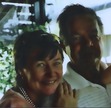Jan Hawkins's Blog
November 13, 2022
I AM
The Eora People:

I am a descendant of the ‘convicts class,’ and a native of Australia. I am among one of the First Australians. It was my people who named this land even though the people of the tribes who had lived here since the Dreaming make this claim. They were of many nations, but we are becoming one. Like the song, We are one, but We are many. My people have trodden these shores and plains of the Great Southern Land for long enough to be indigenous to this land and yet we are denied these truths.
I am of the Eora People. I am a ‘Woman of the Eora’ in the terms and language of the First Tribal Nations People, the Cadigal and the Tharawal tribes around Sydney. I am a ‘woman of the rivers’… yet I am not considered of First National Heritage. The indigenous population of the colonial era claim to be of ‘First Nation Heritage’ yet they were and remain of many different Nations. Australia is my National Identity. I am not of the tribal populations of Australia, my links are to the tribal populations of the Northern Hemisphere.
The word “Eora” has been used as an ethnonym by non-Aboriginal people since 1899 , despite there being “no evidence that Aboriginal people had used this term in 1788, as the name of a language or group of people inhabiting the Sydney peninsula”.Since the late 20th century it has also come to be used as an ethnonym by Aboriginal people too. The word first appears in the wordlists of First Fleet officers, where it was mostly translated as “men” or “people”
The word “Eora” or its reference form yura in its original sense “people” or “Aboriginal people”, from 1899 onwards non-Aboriginal authors start using the word as an ethnonym, in the sense of “Aboriginal people of Sydney”:
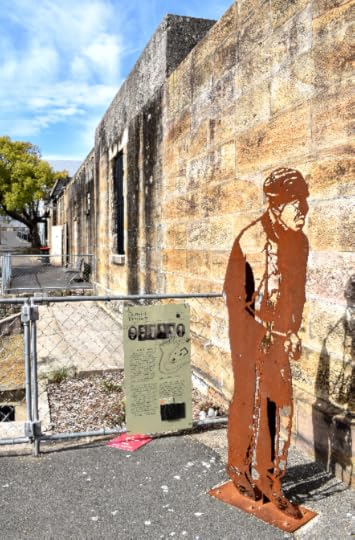
I do not want to belong to a heritage or nation that is not my own. I am not English, I simply wish to have my existence, and the experience and stories of my families acknowledged. I am Australian, I am termed and classed as a white Australian, and yet I acknowledge no skin or creed other than Australian as my own. Nor do I acknowledge a “class” of any kind and yet my ancestors were seen as of the convict or colonial class. This terminology is not our way, nor the way of Australia. In fact, we commonly hid our class origins as our society attempted to place us into ‘class’ in the terms and ways of their ‘Mother Country’ from which we were removed many generations ago. ‘The Mother Country’ is not my country and our skin is also not white, it is spotted and motley, it is brown and dark, and yellow and of many hues. Our ancestors were born of many lands.

My children and grandchildren are not white, their skin is often as dark as that of the First Nations tribes, indeed some are of the First Nations tribal heritage; and yet they too are told by some that they are not indigenous to this land either. To some they are an aberration, neither wanted by their tribal ancestors for their skin is not dark enough, nor wanted by those descended from white colonial class who prefer to think that my family, my people don’t properly exist as a people.
It is from amongst the ranks of my family, of my kind, that the Colonial populace emerged. It is from them that our wild Colonial boys grew to be men and it is from their ranks that the ANZAC’s were born. They are the true Australians. We are the true Australians yet we are not all First Nations people, though we are among their ranks. We are the currency kids of our world, those who were traded in this land. We are people who are undeniably Australian, born to the Nation of Australia and none other.
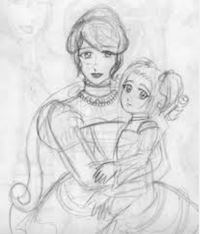
The Australian children of my ancestors were taken from their mothers for over some seventy years , these children born to convict women, by those deigned by the authority and law or rule of this our land. Their mothers had arrived to these Australian shores in chains. We see few photo’s of them as they pre-date the era of photography. The photo’s we see of those in chains are commonly men known to be of the tribal people and we are told we should be outraged and justly so. But it is as though those who came earlier, those who were first draped and clamped into chains, who are not seen to have existed or suffered . Those who live through such early atrocities also, and yet we are not told that they also deserve our outrage, even though their crimes were of a common nature, as is their treatment and experience.
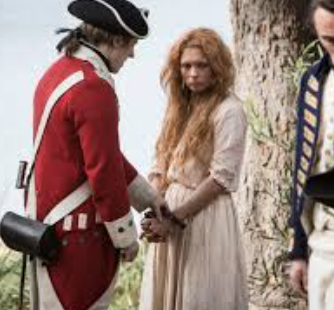
These convicts were the first of the Australian stolen generation and many of their children did not survive their incarceration in the nurseries, asylums and orphanages of the day. Indeed some of these convicts were still children themselves when they first arrived to these shores. And yet there is little outrange. Outrage for those taken from their families and transported from the lands of their birth; carried in chains across vast oceans, because they lived in poverty and starvation, which had bought them to crimes of property or larceny. Many were but children.
These injustices are not acknowledged commonly. Those Australian currency kids who survived knew their parents walked and worked in chains, some for many years. Others suffering brutal treatment for crimes of poverty, these things also are not acknowledged.
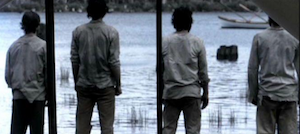
We are the forgotten generations who laboured to build the societal structure of this land and the very earliest cities and buildings of the colony. This too is not commonly acknowledged. This is our history and any sentiments of “Sorry about that” are neither sought nor welcomed. There are no words, or will, to forgive, or to be forgiven for historical facts. There is no “sorry” due. It is what it is and the lessons of this history should have been learnt. We choose not to be victims as we are instead, nation builders . We are survivors and of this we are proud and we will ask only to be acknowledged.
So what makes me a woman of the Eora? Why am I a woman of the river people?
Aboriginal people were the traditional occupiers of the lands on both sides of the Georges River where I grew up, also of the Parramatta River and of the Hawkesbury River when the Europeans arrived, Dharug on the northern shore and Dharawal on the southern. My families have also lived (born and died) in this region for over 200 years, and for several generations.
I am an Eora Woman, I am an Australian.
Jan is an author and writer. You can find her publications on travel throughout Australia, and in fictional tales of Aboriginal Australia at Amazon.com & Amazon.com..au
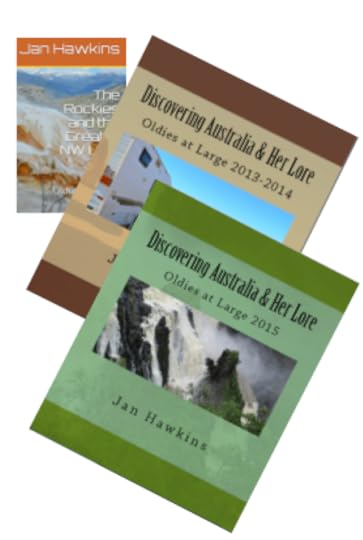 Books Travelling Aus’
Books Travelling Aus’
 The Books of The Dreaming Series
The Books of The Dreaming Series
September 6, 2022
Women of the Cascades and Men of the Tenny – Convicts All
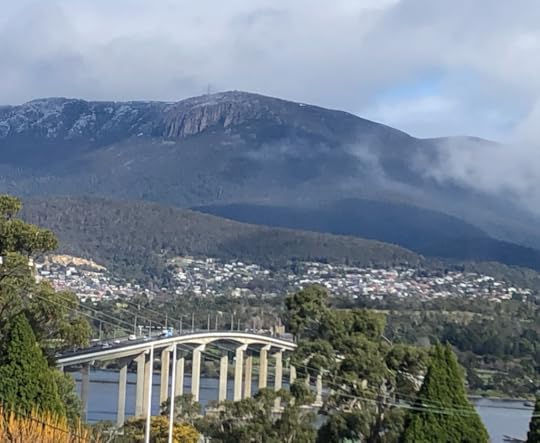 Hobart, Tasmania
Hobart, TasmaniaIn the eighty years of convict transportation to Australia, between 1788-1868, some 162,000 people (including children) were transported. Only 24,000 of these were women and a half of these women were sent to Van Diemen’s Land. It was a male dominated population most certainly. Hobart in Van Diemen’s Land (now Tasmania) received approx. 65,000 men and women transportee’s sent out from Britain, Ireland and several other English colonies. Many of their crimes were crimes of poverty and the brutal consequence of the industrial revolution, famine, as well as political crimes.
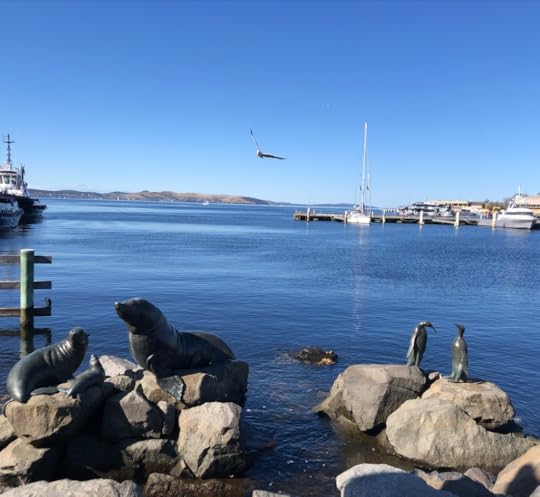 Hobart Harbour
Hobart HarbourSo what happened to these people once they arrived? Just what could they expect would become of their lives. The punishment they had been meted out was transportation, along with a term of servitude attached, as exile was itself considered a catalyst for reform. Those convicts of circumstance or wealth were more often than not given a pardon once they arrived on our shores. However, usually the term of servitude was either 7years, some 10yrs and others 14 years. A ‘life term’ was set for about a quarter of convicts sent to the colonies however this did not always reflect the gravity of their crimes, or lack thereof. Housebreaking and stealing clothes could also earn you a life sentence as a convict in servitude and crimes relating to property often received the harshest of sentences.
Most convicts never returned to their homelands, either with having no desire to do so or no legal means. The first step for a convict to a ‘normal’ family and life was often a ‘Ticket of Leave’ which allowed one to begin the process of building a life with some autonomy and was often the first step to marriage and family. Most eventually received conditional pardons but this also meant that they were required to stay in the colony.
When convicts arrived into the harbours of the penal colonies of the then ‘New South Wales’ they were dealt with according to the policy of the day. Some notoriously were left on the ship until they could be accommodated, others were assigned early or sent to clearing housing. In most receiving settlements where convicts were landed they developed what they viewed as suitable accommodation.
In Sydney NSW the Parramatta Female Factory was a multi-purpose station or factory. It was a place of assignment, a hospital, a marriage bureau, a factory, an asylum and a prison for those who committed a crime in the Colony. The reason it is called a factory is because it manufactured cloth – linen, wool and linsey woolsey however Cascades in Hobart Town in Van Diemen’s Land, was also called a Factory and yet it produced none of these commodities.

Cascades Female Factory was primarily a house of correction and this women’s gaol/factory operated from 1828 until 1877. Cascades Female Factory was intended to remove women convicts from the negative influences and temptations of Hobart, and also to protect society from what was seen as their immorality and corrupting influence. To visit Cascades today is to step back in time and I highly recommend the ‘play’ which will take you back to the colonial era.
Most ‘Female Factories’ around the colony primarily managed convict women and had little other purpose. They operated as places of work, of punishment, as hiring depots. They were places of shelter for women between assignments, when they were sick, ill or pregnant. Pregnancy btw was a crime for the unmarried convict woman, one for which she usually received an additional term of servitude added to her original term to compensate the colony for the time she was ‘off work’. The life of a convict was not an easy life, particularly for women.
Sydney dealt with its arriving male convicts at the Hyde Park Barracks, now a operating museum that offers a self guided tour through its history. For male convicts in Hobart, they were usually assigned out from the ‘Tenny’ which was built in the 1830’s. The Tenny, as it was un-affectionately known, was the Penitentiary Chapel or Hobart Penitentiary for men. The Penitentiary is home to incredible stories of crime and punishment in Van Diemen’s Land, with courtrooms and underground tunnels to the chapel, solitary cells, and still-working gallows of this fascinating historic convict site, which later became Hobart’s ‘old gaol’ and Supreme Court.
In the early 1830’s, a service in Hobart’s chapel or Prisoners’ Barracks Penitentiary was far from a serene and holy experience. The design of the Chapel included thirty-six solitary confinement cells beneath the chapel floor, which were later declared inhuman. It is now managed by the National Trust and a visit here is an experience you wont soon forget.
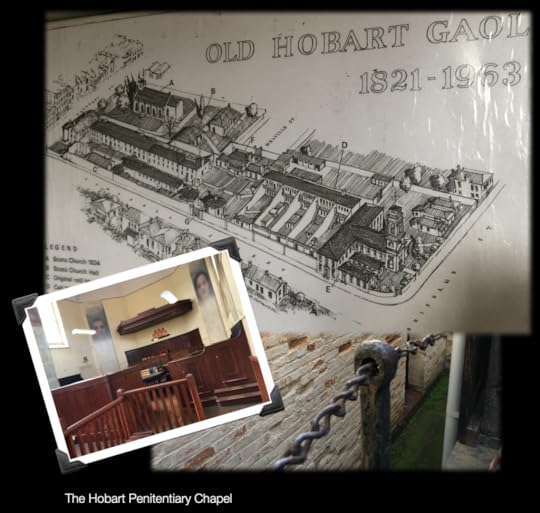
Attached to the chapel was an area which housed the convict men, this is now no longer, but pictures of this area remain. It was an area of punishment and accommodation. The convict film, ‘Pandemonium’ which is viewed if you take the tour of the Penitentiary, is absorbing experience, seated as you will be on the hard wooden benches of the old chapel in the manner of the convict experience. There are many tales of the Tenny, some ghostly and others unforgettable.
In the whole, that many survived their convict experience is remarkable and testament to the many other hardships and difficulties our convict ancestors faced. Not to make light of the hardships of the emigrants and free settlers who followed the convicts, and those indigenous to the land, diverse families and tribes who also struggled and fought to survive colonisation, as did we all.
Arriving into a land which had absolutely none of the infrastructure of any cohesive and large society and yet managing to survive and thrive, was a feat which often goes unacknowledged. There is no doubt that Australia’s growing pains were acute, diverse and decisive. However we have emerged as a prosperous and unique society, thriving as well as none other I can name. We still have growing pains yet to be resolved and a some growing up to do, but it can’t be denied that we have, as a whole, done bloody well for ourselves.

We should be proud or our amazingly diverse beginnings as a society and in building a culture unique in this world, yet a society inclusive of the many people of the World. It has been well done on a whole, and there is much more to well do.
You can read more about Jan’s travels around Australia and Australian Lore in her books ‘Discovering Australia & Her Lore’ Available at Amazon.com & Amazon.com.au
Jan also writes about Australian Lore in her Aboriginal series The Dreaming also available at Amazon
Enjoy…
August 29, 2022
What Became of Van Diemen’s Land’s Youngest Convict Lads?
One of the highlights of our visit to Tasmania was our venture into the convict punishment precinct of Port Arthur, stretched out as it is on the Tasman Peninsula at the very southern end of Aus’. A penal settlement, isolated by the cold antarctic winds and separated from the main Tasmanian island by the savage dog line across the isthmus of the peninsula which kept the convicts in, and the good society of Van Diemen’s Land out. The Dog Line was accompanied by a guards hut where guards and their families lived and this was as close as polite society came.
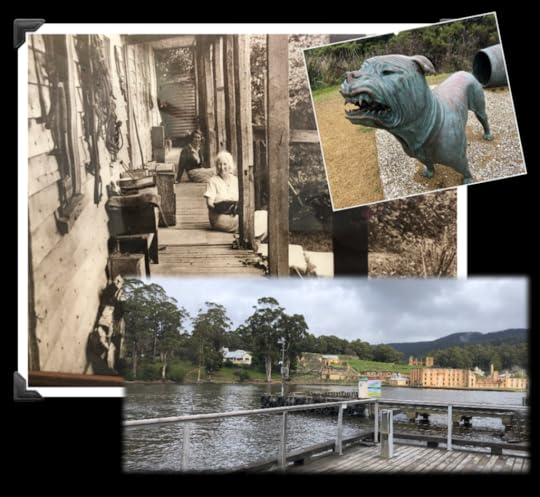
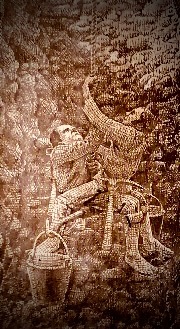
Port Arthur is joined to the rest of Aus’ by a narrow isthmus of land, it was a true outpost of colonial society and all humanity. It was this striking geological feature that turned the peninsula into a world of hell for the Australian male convict. Hell and hard labour, including the dreaded coal mines of the peninsula. Designed as a place for secondary punishments Port Arthur also included Point Puer, a gaol built exclusively for the young boys. One designed also to spare these kids the worst vices of the penal system after the children were transported across the seas to a distant and strange land, removed from all family and society.
Hobart at the time was awash with convict kids, boys mostly, urchins of the streets who no settler to this land wanted to deal with. Girls were quickly bonded into servitude however the young boys posed a problem. Too young to be put to productive hard work, when stronger more mature convict labour was readily available, they were seen as something of a nuisance to feed and to deal with. So the powers that be created Point Puer on an isolated peninsula, at the tip of yet another isolated peninsula, far from humanity and society.
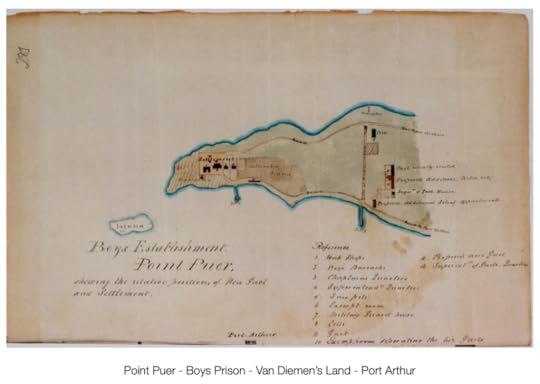
This is where they sent the convict boys from 1834 until its closure in 1849. The first of the boys arrived in late 1833 and were immediately set to task to build their own prison. Point Puer was a world first as a ‘reforming institution’ for boys in the British Empire predating any other.
Criminal responsibility then began at the tender age of 7yrs and children as young as 10yrs old could be transported legally, although they were required to have a history of at least three convictions, and it should be remembered that many of these child convicts had no idea of their true age.
During the half a century and more of transportation from the Britain to our Australian shores, some 2300 children were sent to Point Puer, for often very menial crimes. Crimes more related to survival than criminal intent. These children and youths were homeless, penniless and barely literate, and commonly they were still that when they were set free pouring into Hobart Town and the surrounding countryside years later.
Point Puer was opened in 1834 and for two of my ancestors, fatherless brothers, Robert and Peter CHARLES this became their home. Barely in their teens they are noted as being just 4 foot in height at the time of their transportation. Point Puer penal settlement was where they grew to manhood, incarcerated there for some years, from the time of their arrival to the shores of Van Diemen’s Land. They had been delivered as hardened boy convicts from Edinburgh in 1838, aged just 13 & 14yrs when they arrived after much more than a year in the hulks and on convict transporters. In 1841 they were eventually then sent on to New Farm (in Hobart Town) to initially work in the gardens. They were deemed to have grown strong enough and were considered trained sufficiently.
These kids were commonly the urchins of Britain’s cobbled streets, unwanted by the powers that be and disposed of in the cruelest way that you could treat a child, some as young as 9yrs old which is the age Robert Charles was when he was first convicted for stealing food and thrown into solitary in Edinburgh gaol on more than one occasion. Robert had protested that he was ‘not yet 10yrs of age’ when he was sentenced to transportation, however the court knew that he was noted as 9yrs old when first convicted a year or two earlier so he was packed off to the hulks off London’s River Thames, and then onto the dangerous passage across the oceans to Van Diemen’s Land found at the end of existence.
Having grown to young men in the hardened male world that was the lot of the Australian convict, these lads were generally set free by servitude in their late teens and early twenties. You can have no difficulty in imagining what they then got up to then. Thus is born the early legend of the Australian Bushranger. Bands of disenfranchised men trying to survive in the bush, many becoming mates and others becoming adversaries in what was a savage form of society.
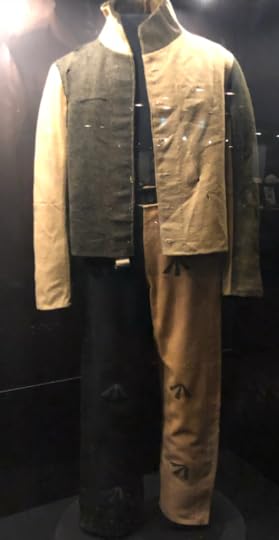
It was these Bushrangers, our ancestors, who then ran with the numerous other emancipated convicts of Van Diemen’s Land who having gained their liberty, found themselves friendless in society which was struggling to maintain the ‘class’ distinctions of the mother Country. Ranging through the Bush was a means of survival in a world awash with the available “free” convict labour. The men, when boys, had learnt to make their own clothing while at Point Puer, generally from sheepskin, clothing complimented by an annual issue of 2 jackets, 2 trousers and 2 striped cotton shirts along with a waistcoat and cap. I imagine having been freed by servitude, this clothing was likely the first thing they ditched, being the garb of the convict. Having served their term as a convict these clothing items, along with any food rations, were issued no more.
Two years later, in the middle of the Tasman winter, Peter and Robert were caught stealing sheep from Richmond, north of Hobart, though what they intended to do with the three sheep they stole is open to conjecture. They went on to etch their names on gaol shutter in Richmond lockup where they were held awaiting trial, before they were duly packed off the the notorious convict outpost of Norfolk Island in 1845. Robert (younger of the two) was convicted of stealing the sheep, while Peter was convicted of receiving these same three sheep.
 Richmond Gaol
Richmond GaolTracing this etchings with my fingers along the small scars in a wooden shutter, done at the time with tack and some type of hammer, remains a poignant bit of colonial graffiti that stays with me constantly. A stark and true reminder of my families history, a history which I love.
Following is a link to the record of the brothers and their activities while incarcerated at Norfolk Island, along with a government record of conditions on the island.
To return to this page just click the ‘back’ button on your browser.
Norfolk Island-1845Click to ExpandRobert, from who I am descended can often be viewed as the most troublesome of the two brothers, even though he is the younger. Both the brothers remarkably found love and marriage later in Hobart but that is another story. This, after their return to Hobart when Norfolk Island was again disbanded for its brutality. Robert again ended up at Port Arthur after a tragic sequence of events and the death of his first born and namesake. He worked a term in the coal mines before the judiciary eventually decided that he had been punished enough and granted him a full pardon after a public outcry about his treatment at the hands of the authorities.
Robert and his growing family went on to settle in Sydney Town but the law was not yet shot with him. Peter settled happily in Hobart and raised a flourishing family, the descendants of who still traipse around Hobart. He was guided by the influence of the church and undoubtably a good woman, as were they both in their own fashion. Their story lives on with much yet to be told, but I hope that the telling never fades into the mists of history and time.

You can read more about Jan’s travels around Australia and Australian Lore in her books ‘Discovering Australia & Her Lore’ Available at Amazon.com & Amazon.com.au
Jan also writes about Australian Lore in her Aboriginal series The Dreaming also available at Amazon
Enjoy…
August 27, 2022
Our YaYa Adventures into Hobart & Ratho
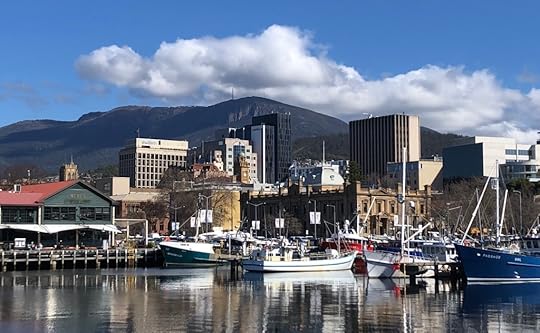 Hobart Harbour, Tasmania
Hobart Harbour, TasmaniaTwo hundred years ago two young sisters (children really) stepped off the “Castle Forbes” which had just docked into the new settlement of Hobart in Tasmania. Ann and Margaret Honeyman were just 11 & 10 years old. They had been newly indentured to the Reid family as maids to the Reids two babes. They had left their mother and two younger brothers aboard the Castle Forbes to travel onto Sydney Town having just received news that their convict father, who they hoped to join up with in Sydney Town, had died. These two girls, new arrivals to the penal settlement of Hobart, a town settled just 18yrs prior, were Scottish emigrants now bound for the colonial outpost along the Clyde River in the highlands near to what was to become the township of Bothwell on the Central Tasmanian High Country.
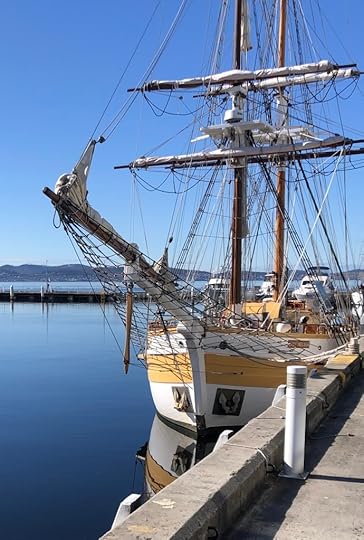
Hobart was a penal settlement then, the entire island later to become the primary penal outpost for ye ole mother England to send her poor and disenfranchised, those victims of the industrialisation era. Most convicts were male, guilty of menial crimes mostly of theft or larceny and convicted commonly for several years penal service, and packed off to struggling penal settlements on the other side of the world. They knew they would never see their family nor home country again and despite being mostly, barely past their teens, they were destined for lives of labour, service and breeding.
Children as young as 9yrs were transported and 20% of convicts shipped off over the following fifty years of convict transportation were teenagers. The average age of the convict was just 26yrs. Married with family or unwed from the British Isles and its Colonies, it mattered little. They were legally given licence to wed again and breed… as soon as possible, often acquiring their ‘Tickets of Leave’ on this merit. This despite it being a crime for a unwed woman to fall pregnant at all, a crime punishable by a further term being added to her time of servitude. It was a neat little arrangement for a world lacking in womenfolk of any age, but particularly breeding age.
Margaret and Ann, free children, knew little of this as they climbed up onto the bullock cart and drays, to make the three day journey up onto the steppes of the Tasmanian highlands. It was so like Scotland and yet so very different, then in its carpet of spring wildflowers often noted as being remarkably beautiful.
 The Tasmanian Devil
The Tasmanian DevilThey faced the risks of tribal attacks, the strange growling of the devils which inhabited this land and the raids of the many bands of bushrangers, young and older lags who had served their sentences and had no means of employment in a land becoming saturated with those bound by ‘free’ convict servitude. In their first venture up into the highland forests the wagons were raided by these bushrangers and they were forced to return to the main settlement and refurbish their stolen supplies.
Following is an extract from the ‘Clyde Company Papers’ the account of a raid by Bushrangers which the first hand account can be read. Use the back button to return to this post.
The Bushrangers of Ratho 1822Click to Open
The family group made their way eventually to Dennistoun, settled just two years earlier, an outpost homestead on the highland steppes where they were welcomed. Alexander Reid was advised about taking up land encouraging him to help feed the burgeoning settlement of Hobart and other smaller outposts. The family then settled the nearby grant of Ratho and for the first years lived in a two to three room mud hut, built along the Clyde River near what was to become the township of Bothwell, this along with their servants and several other allocated convicts.
This is what has bought us to Tasmania some two hundred years later. YaYa sisters in blood and heart. It was one of those holidays that will live on in infamy and memory… You have to just love such times, out of time.
It was our ‘YaYa Sisters Getaway’ or in the words of the character Siddale “Of all the secrets of the Ya-Ya Sisterhood, the most divine is humour.” And what a lot of fun we had!
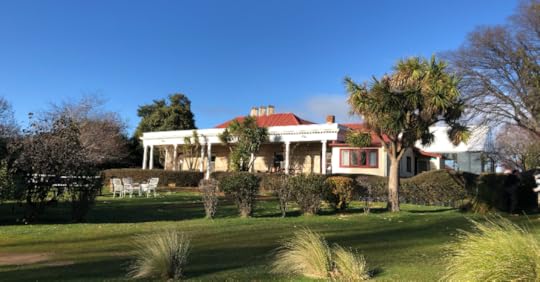
Staying in the homestead was just a delight, touching places and hearing tales of the families adventures back in time. A standout occasion was listening to Alexander and Jane Reids descendants read from the family letters and papers written of those early pioneering ventures, it was just an indescribable privilege for all concerned and we loved it.
The old cottages and homestead buildings are steeped in history and the touch of time. The Clyde River bubbling along nearby and the frosty mornings of winter, along with the occasional snow were a reminder of the hardships our pioneers dealt with.
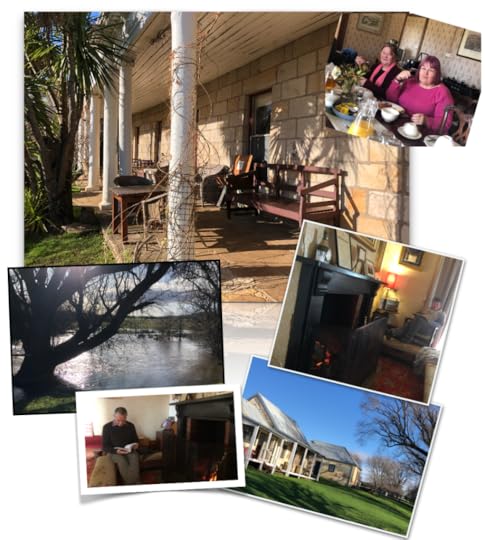
Ann went on to marry very young as did her sister Margaret. Ann’s hubby, Campbell Roy, was a tall Scottish Highlander who was sent out to Van Diemen’s land at just 17yrs of age in 1825. His crime was the theft of clothes in a housebreaking misadventure with a mate. He was selected as a convict to the nearby homestead of Dennistoun serving as a shepherd for the ‘term of his natural life’. However he went on to gain his freedom in 1841 and moved on to the goldfields of Victoria.
Ann died within a year of their marriage at the age of just 17yrs, giving birth to their only child. She is buried in the private cemetery of Dennistoun, her grave settled beneath tall, windswept pines with a few others, such as the young Mary Daniell’s who was murdered along with her twin babes in a tribal raid in 1831.
We had many other adventures in our time in Tasmania and we will be back for sure. Tassie is just a delightful place to visit and there is just so much to still see and do. I expect it will draw us back time and again and I look forward to this with pleasure.

July 18, 2022
An Aussie Ski Season
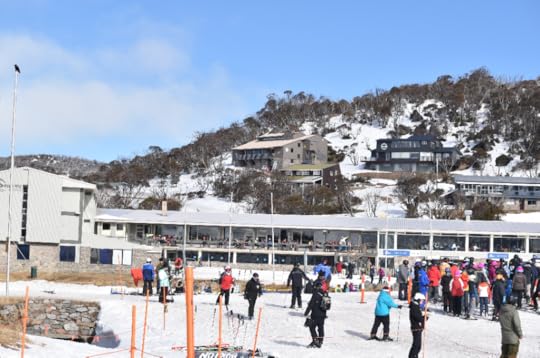 Smiggins Hole
Smiggins HoleNow I am not a snow bunny… however I do appreciate a pristine view of the white stuff from the comfort of a snug fire and a hot drink. When each of our Grandies hit double digits we start to plan a holiday with them… one to drag them off individually with Grampie and Grandma into the never never of their choice… it is a ‘our’ time; a time to discover the character of each of our Grandkids as they begin to emerge into adults and to inspire in them a certain independence. It is something we absolutely love to do and it has proven equally rewarding for all concerned.
It has become obvious over the years (and a number of Grandie holidays) that given a choice of anywhere in Aus’ to go for a holiday our Grandkids do love a snow jaunt. It should be noted that they all are from sub-tropic to tropic Queensland, and the snow has a unique attraction to these sun loving kids. It’s an unknown adventure into an strange idyllic world.
We have visited many snow fields throughout Aus’ and across the ditch as well. Including those in Tas’. Amongst them are Ben Lomond and Mount Wellington and the high country of the Tassies Tablelands, mostly to run our fingers through the white stuff. Serious jaunts have seen us at Mnt Hotham, Mnt Buller and Dinner Plains in Vic. In NSW it has been through the lovely Perisher Valley of the Snowy country. This time we chose to revisit the very first snow field we ventured onto some 40yrs ago with our own baby vegemighters… this, Smiggins Hole.
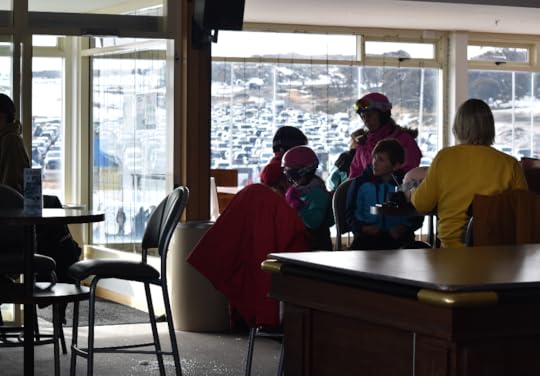
We have fond memories of Smiggins in its youth, those of tearing down snow slopes on toboggans with our kiddies when they only knee high and over, it was a holiday commonly remembered fondly as the ‘soup’ holiday. We were on a shoe string and in a commuter van based out from Cooma when we dragged our babies up into the Snowy Mountains… the fare was soup in all its varieties and crusty bread for both lunch and dinner for every day, this for a week. It was the ‘soup’ holiday and we had an absolutely memorable ball non-the-less. Building our snowman, having snow fights and haring recklessly down fresh slopes between the trees.
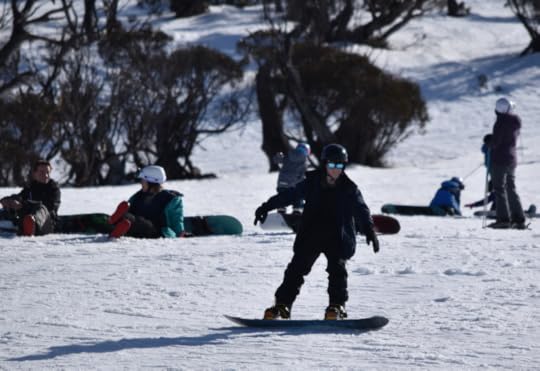
I must say that Smiggins Hole has grown up some over the last forty years. Australians have discovered the good fun to be had in the snow and now the slopes are littered with ski lifts/tows, and they host hundreds of people at play, but we still loved it just as much this time around. I would recommend booking ahead, for tickets, passes and everything possible, particularly lessons and our choice was the 3 hour lesson on the snowboard. The Grandson had a ball and stayed extra time as it was just such a beautiful afternoon… one of those spectacular winter days in the snowfields. I stayed in the warmth of the Smiggins Pub and watched through the panoramic windows. It too was just equally delightful for these old bones of mine.
The making of memories, those of blue Aussie skies, white fresh snow and the delight of those discovering the wonder of snow for the very first time. Just magical!
July 4, 2022
Canberra – A Holiday Destination
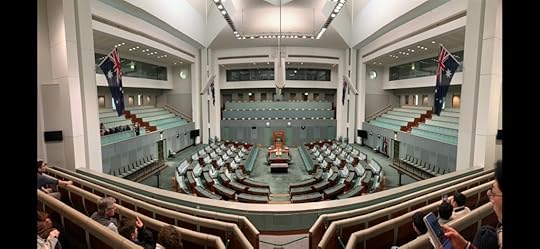 Parliament House
Parliament HouseOn this tour we headed to our National Capital with a choice of places that made our Bucket List. My advice is – Plan your visit! I couldn’t emphasise this more, and you will find Canberra a great place to take kids.
Here are a couple of choice highlights from our week and I hope they fire your imagination because despite it being damn freezing… its been a great week.
Visiting Shawn the Prawn
Canberra Parliament House is always an eye opener and gives you an appreciation of our Parliament. I am not a fan of the majority of politicians, nor overbearing authority, but I do enjoy the opportunity to appreciate the mechanics in the workings of our Nation.
Like most places, you need to book into a tour even if they are free. This particularly in these pandemic times and make sure you do this on-line weeks before your visit. The tour of parliament house is highly recommended and even though its just 30 min or so, it does give you an appreciation of the finer detail in government. Cruising the portrait and history displays in the galleries is an added diversion. They regularly change and they even kept the 13 yr old entertained along with a few political tales about the shenanigans that go on in parliament. I love the tall marble columns and the fine architecture and also the cafe’ is a delight to spend some time in but examining the enormous tapestry in the Great Hall a constant draw as each visit I discover something new within its visual story.
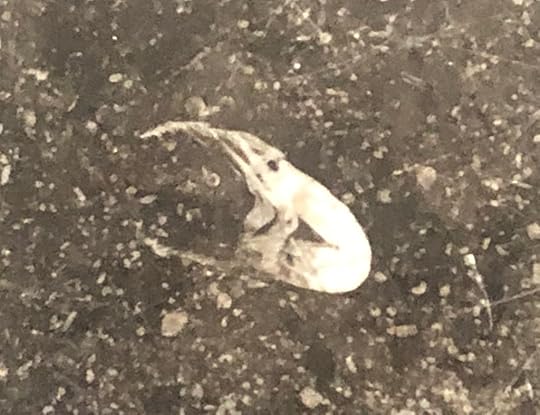 Shawn the Prawn – Resident
Shawn the Prawn – ResidentA favourite though is ‘Shawn the Prawn’ along with the other mysteries of Parliament House. He is an entertaining attraction to be found in the entrance foyer, it is a delight for kids and adults alike to reflect on just how long that little guy has been waiting to become part of our historical repertoire, let alone the quest to simply find him!.
Shawn is a fossil, and can be found bedded in the dark marble at the base of the sweeping stairs leading to the 1st floor galleries.
Reflecting on his personal history as you marvel at his very existence does put a new perspective on the entire experience of a visit to Parliament House, particularly for the budding adults.
Questacon
The best of Canberra’s entertainment, particularly for kids, is a visit to Questacon the science expo of the country. Questacon continues to add to its interactive displays and is a must for kids. Even adults find it wonderfully entertaining and it truly is great value with entry fees under $20 each. Once again, book a time for entry atm. They were allowing unbooked guests in but these would be the first to be denied entry given any restrictions.
The interactive musical displays of air-instruments were truly entertaining for us, along with keeping the kids moving through the several galleries, each exploring the many varied aspect of science and physics was as entertaining as it was absorbing. Watching the grandson trying to his wings was fun and I loved it! I always do.
Playing the AngelNational Museum of Australia

Another visit with free entry is also well worth adding to your itinerary. There is paid parking during weekdays, but weekends are free and a great time to visit. We found the best entertainment was the interactive coding display where 5 participants learn they need to work as a team, enforcing the concept of team work in coding. It was delightful and the grandson kept disappearing, back to that display. We found solace in the cafe’ but touring the galleries was also a real entertainment and I highly recommend any visit.
We visited many other places but these were just a few of the best. Canberra holds a great deal in the many things available to do, including those free activities for the bruisers. As a family holiday destination it is really something well worth considering. It is after all an entertaining destination.
Jan
June 30, 2022
The Legend of the Australian Bushranger
 The Aussie Colonial Bushranger
The Aussie Colonial BushrangerExploring the Bushrangers, or the Wild Colonial Boys of the Riverina district is a fascinating history and journey. Primarily operating on the mainland Aus’ between 1850 & 1870 the history of bushrangers however goes back to the very early settlements of mainland Aus’ and Tasmania and on into the early days of Federation in the 1900’s.
I have a few ‘bushrangers’ sprinkled through our family history, none overly famous for their bush-ranging years but all, at times, ranged through the bush. Most were merely trying to survive colonial life and a few found themselves in gaol.
The most notorious in our family were the Charles brothers. Rob and Peter (Lovey) CHARLES who came out as convict children/youths in the 1830’s and grew up in the ‘Boy’s Prison’ of Port Puer which was part of Port Arthur (Tasmania). Once let free, having served their time, being barely into their 20’s they found survival in the settlement of Hobart Town a trial, so they took to the bush.
For two years Rob and Peter ran with the bushrangers & bushmen, (including cross-cultural aboriginal youths who found no place in the towns or tribes) until they ‘got done’ for stealing sheep from Richmond Town, nearby Hobart. This bought them passage, after their trial, to the notorious convict settlement/gaol of Norfolk Island, along with compatriots Martin Cash, Larry Kavenagh & William Westwood (Jacky Jacky) and others. At the time Norfolk Island was under the govern age of the noted sadist Major Joseph Childs.
A Short Video of Norfolk IslandIn July 1846, William Westwood (alias Jacky Jacky) was tried for murder after the ‘Cooking Pot Riot’ on Norfolk Island and sentenced to death. The letter he sent to the Governor of the time aptly depicts the life of the convict Bushranger:
From a letter written by Wm. Westwood (Jacky Jacky) who was hung for the murder of John Morris in matters relating to the Cooking Pot Riot of 1846.
“I was tried and sent to Norfolk Island and this place is now worse than I can describe. Every species of petty tyranny that long experience has taught some of these tyrants, is put in force by the authorities. The men are half-starved, hard worked and cruelly flogged. These things brought on the affair of the first of July, of which you have no doubt heard. I would send you the whole account, but that I know you will have it from better hands than mine. I am sorry that this will give you great pain, as there are several of the men that have been under your charge at Port Arthur concerned in this affair..
Sir, on the 21 st of September 1846, Mr Brown arrived in the Island with commission to form a Court. Fourteen men were then arraigned for the murder of John Morris, that was formerly gate-keeper at Port Arthur. This trial occupied the court nine days. The Jury retired and returned a verdict and found twelve of the fourteen guilty of murder. On the 5 th of Oct the sentence of death was then passed on us, and to be carried into effect on the 13 th Oct 1846. Sir the strong ties of earth will soon be wrenched, and the burning fever will be leaven-a resting place for me, William Westwood.
Sir, out of the better cup of misery I have drunk from my sixteenth year – ten long years, and the sweetest draught is that which takes away the misery of living death. It is the friend that deceives no man : all will then be quiet, no tyrant will then disturb my repose, I hope. Wm. Westwood.
Sir I now bid the world adieu and all its contains
A Bushranger was not always a ex-convict, nor even a male, There were such as The Lady Bushranger, Jessie Hickman who turned to bush-ranging to survive, and there were those who joined other Bushrangers and learnt the trade of survival. Musquito was another bushranger who was also an Aboriginal guerrilla fighter during the frontier wars of the 1800’s, therefore classifying his acts as merely criminal acts of war or acts of Bush-ranging is complex.
Another bushranger was Mary Cockeril or Black Mary also of Aboriginal culture (The Mouheneener people/family of Nipalunaa (Hobart)). So to be a bushranger you were merely attempting to survive outside the confines of a settlement or your society, for whatever reason.
An outlaw though was another matter. An Outlaw was a legal term (of the 1870’s) that encompassed those who had been declared “exempt from the protection of the law” by the government. People declared outlaws had thirty days to turn themselves in before the declaration took full effect, after which time they could be killed without provocation and the killer would be entitled to the reward offered for the outlaw. To be ‘outlawed’ you generally need to have killed someone, and as such you were hunted.
Although the Outlaw was commonly named as a Bushranger, they were not merely what was frequently referred to, early in our colonial history, as ‘bolters’ or escaped convicts. And then there were those who choose to go ‘rogue’ from society in general… today all are now historically and generally all termed as bushrangers.
A favourite Australian Movie (Free to Air) of mine is the Channel 7 series The Wild Boys, Set in 1860’s Outback NSW it is a good depiction of survival in colonial Australia. It begs the question…
Just what is it that makes a Bushranger?
Well it seems .. not much .. a want to survive is all that was required though the legend of the bushranger lives on in Australian History. A fearful bloke, capable of both generosity and evil. Yet an Australian colonial legend non the less.
June 26, 2022
Hot Springs – Outback in NSW:
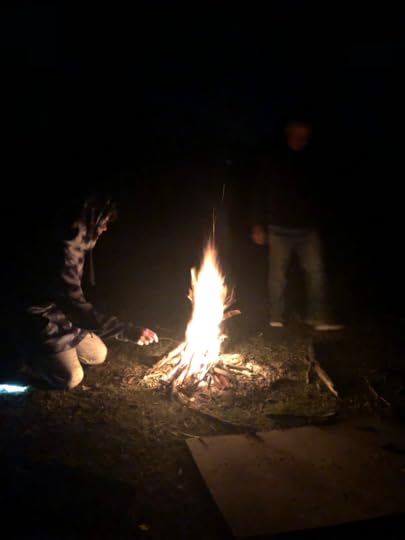
We are off on our adventure into Outback NSW, and the weather if freezing (for a Qld’er) compared to the coast. But teaching the Grandson to light a camp fire was a lot of fun… and he has proven proficient at toasting marshmallow’s which is always a plus as we head into camp at the Pilliga Hot Bore.
Camping up on a billabong, the Rainbow Reserve east of Goondiwindi, just off the border river between NSW & Qld is a delight though. The cockatoo’s and corella’s have all paired up for the winter breeding season and of a morning they are noisy little bugga’s when they welcome the sun.
My very first experience of Australian Hot Springs was on an early visit opal mining, in Lightning Ridge in NSW, and they have been a favourite place of mine for-ever since then. On this trip I was torn between a winter visit to Pilliga Artesian Bore and Burren Junction Artesian Bore. Both quite close to each other and only a drive west from Narrabri or Moree in the NSW Outback.

Moree of course has its own precious hot springs, and a serviced caravan park nearby but we prefer freedom camping, and don’t mind supporting local businesses including donation camps and the subsequent dearth of holiday crowds.
Pilliga Bore won our vote on this trip around, due only to time and distance restraints as we have a plan for this adventure.
Aus’ doesn’t have much current, active volcanic activity, so our hot springs and bores have different origins. What heats our subterranean water is the earths molten core and where we get hot springs, the heated water is coming up from the subterranean molten rock pools of subsurface magma.
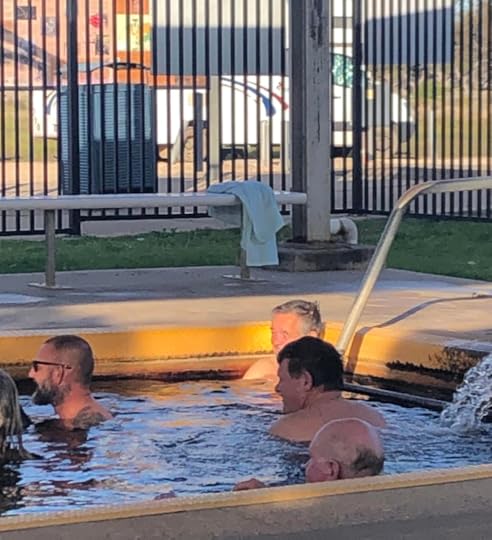 Pilliga Hot Baths
Pilliga Hot BathsHot springs are scattered throughout Australia but my favourite is Bitter Springs south Katherine NT and in the Elsey National Park, it’s a local secret and a true gem of a place. Though forget you heard that from me as I would hate the crowds to find it. Mataranka Thermal Pool in NT is of course the favourite of travellers and you should go there… it too is stunning.
As we relax, warm up and enjoy the delights of the Outback in winter I hope you too find that nice cosy spot somewhere in the sun.
June 21, 2022
Australia’s First Slaves & Servants

Two hundred years ago this year, a branch of my family arrived into Van Diemen’s Land (Tasmania). It was a penal outpost then, one envisioned by those in authority of the day, to take in the tens of thousands of convicts over the next seventy years.
These were people expelled from the British Isles as the “Upper Crust” attempted to deal with those living in poverty, the destitute. Those often starving lower class and the disenfranchised. People who were mostly a product of the industrial revolution of the day, that was being experienced in their own country that of the British Isles.
I have a broad and complex history of convicts amongst my ancestors, these classed as criminals even though they were mostly children and teens. Commonly they had stolen food and clothing to survive. The theft of a ‘peck of pears’ here… a handkerchief or a shift there. They were taken from their families and transported, or shipped like a stolen package to a place they could neither imagine, nor even envisage.
They had been separated from everything they understood or knew. Once here after a journey of months on the high seas, they were totally isolated from family and what was familiar. Their lands of origin mostly never to seen or known again. They were commonly placed into questionable servitude, a polite form of slavery usually suffered for several years and more, while they grew into adulthood, if they even survived their trials. They were the backbone of our own culture and country. They built our early towns & cities, our houses and our roads; and they didn’t always behave well or take to authority easily either, as witnessed by their many and varied misdemeanours.
However, the mob I’m visiting from our past, who first arrived into Hobart in 1822, were free-born and free settlers. They came as a family to re-unite with a convicted father but the two girls who were to stay in Van Diemen’s Land in 1822, were separated from their mother and brothers in Hobart while the remainder of their family moved on to Sydney Town. This was because they had received news that their convict father had attempted and managed an escape, having stowed away aboard a trader to India. However he had died the year earlier, unbeknown to them when they departed Scotland.
Ann & Margaret Honeyman were aged ten & twelve when they were indentured to the Reid family as nursemaids to their young children. Their mother, now widowed had little choice but to make such an arrangement for their welfare. Then she went on to sail into Sydney Town with the two youngest boys. There she made another life one of her own. She was a feisty young woman herself, by all accounts and records, but that is another story for another time.
As pioneers, the Reids and their entourage ventured into the highlands of Tasmania, which was a strange place then. A bush filled with wildflowers, wild natives and bushrangers as well as the strange, noisy devils of the wilderness which haunted the night hours with their fierce scream. They built Ratho Homestead, one of the early pioneering settlements alongside Dennistoun and others early homesteads around Bothwell and along the Clyde River.
 Ratho Homestead, Bothwell Van Diemen’s Land (Tasmania)
Ratho Homestead, Bothwell Van Diemen’s Land (Tasmania)Ann was my ancestress and she was to die on the childbed at barely 18 years of age, married to a Scotsman, being from Scotland herself. Her story is as fascinating as it is short-lived. Her sister Margaret was to go on to live a longer and fruitful life in the highlands of Van Diemen’s Land, around Bothwell.
This is where we are headed over the next months, on a slow family pilgrimage to Ratho, a B&B in Bothwell which was pioneered by the Reid family, including Ann & Margaret Honeyman their servants. We are set to experience the joys of the Aussie Highlands of Tassie and the surrounds of Hobart.
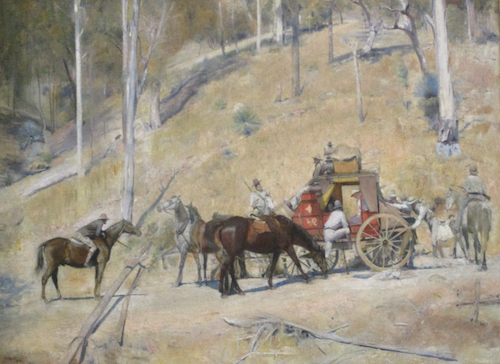 The Bushrangers
The BushrangersOver the next months we will be travelling down through the outback NSW into The Riverina, or into bushranger country in and around the Murrumbidgee River. From there we are headed into our National Capital, Canberra and onto the Snowy Mountains and the glorious snow country in season.
Once we switch out a few much loved relies for others, we will be headed onto Van Diemen’s Land, or Tasmania and into those beautiful Highlands. This is a tour that has been months, if not years in the making and I am very much looking forward to it.
Come join me on my adventures. You can subscribe to this page to receive notice as I head out on each new adventure along the way.
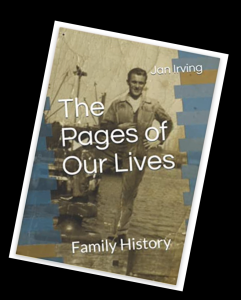 A Genealogy and Family History Publication
A Genealogy and Family History Publication
August 3, 2021
The Pages of Our Lives

This damn virus has impacted our lives for nigh on 18 months plus now, so travel is complex and family are paramount in our lives. But life does go on regardless.
We (The Man and I) have staged a break-away and I am currently sitting up in the rainforest at the Top-of-the-Range above Cairns where it is warmer, the cold got to me so we staged our break-out to touch base family, putting the finishing touches to my latest project. A new publication for the Family Historians.
(Nb: For a preview of this title visit the US site here. Australian purchasing can be done through all other links)
The covid times for us haven’t been a complete hiatus, as there are a number of positives which came out of the restrictions. But as I am over it all… I won’t go into that. Perhaps the most positive thing is that it all provided time to put things-to-rights with my interest in Family History research – You see ‘I Hunt Dead People’ as a hobby. Given the time, I have dived into my Family History interests and taken on a Uni course… A Family History Diploma, with UTAS (Tasmania) and what an adventure it has been, and a joy to anticipate.
For those who know me, you know of my interest in family history and research. It has been a life long interest… born of the way that some of my maternal family (Mothers side) arbitrarily decided that my mother wasn’t entitled to know about her fathers identity, or I, my Grandfathers identity. That issue was resolved quite early in the peace (literally)… as not everyone in the family agreed on the unnecessary secrecy and deceit. However, my keen interest in research and resolving questions was here born in my teens, and it has flourished ever since for literally half a century.
The result of this interest, and enjoyment derived from research, has been a vast collection of histories, recollections, photo’s, documents and files that when arranged, will tell the story of the lives of those who have stepped before me. As was recently quoted in a study session…
I did not begin this book looking for skeletons in my family’s cupboard, but once the cupboard was open, they simply fell out.
 Available in Australia Now
Available in Australia NowThis book is a collection of facts found within everyones life, a spattering of selected photo’s and documents and tales told by others has finally come together and I have published a tome, a collection of my family history research. Organizing it into some type of order was always the problem, and realizing why I even wanted to, was the reality. You see I do love the journey of research, and it is this that inspired me to create a point of discovery for the journey of others into further research. I wanted to record and recount many of my discoveries for those who will step after me, as well as others who are interested in such things now… and there are some great tales within these pages.
This is my publication “The Pages of Our Lives” which is now available on amazon.com.au
The book is a journey, and you are invited to find your ‘point’ or ‘person of interest’ and continue the research. To build your own story, and that of your ancestors from this point of contact.
“The Pages of Our Lives” is not the complete story… as there is much that I couldn’t include for so many reasons, but the recounts and facts within the pages, merely offers the choice in points to begin your own journey into your history. This for my extended family, as well as the many stories to be found within the history of the ordinary people who built our Nation, Australia, which would be of interest to others.
 Available in Australia at Amzon.com.au
Available in Australia at Amzon.com.auI hope you enjoy the journey and its vagaries you will find in building the story of your fore-family, as much as I continue to do. And I hope you too can find the love of discovery… for there is so much to discover still.
Enjoy
You can find more information about my other books on my Authors Page at Amazon

